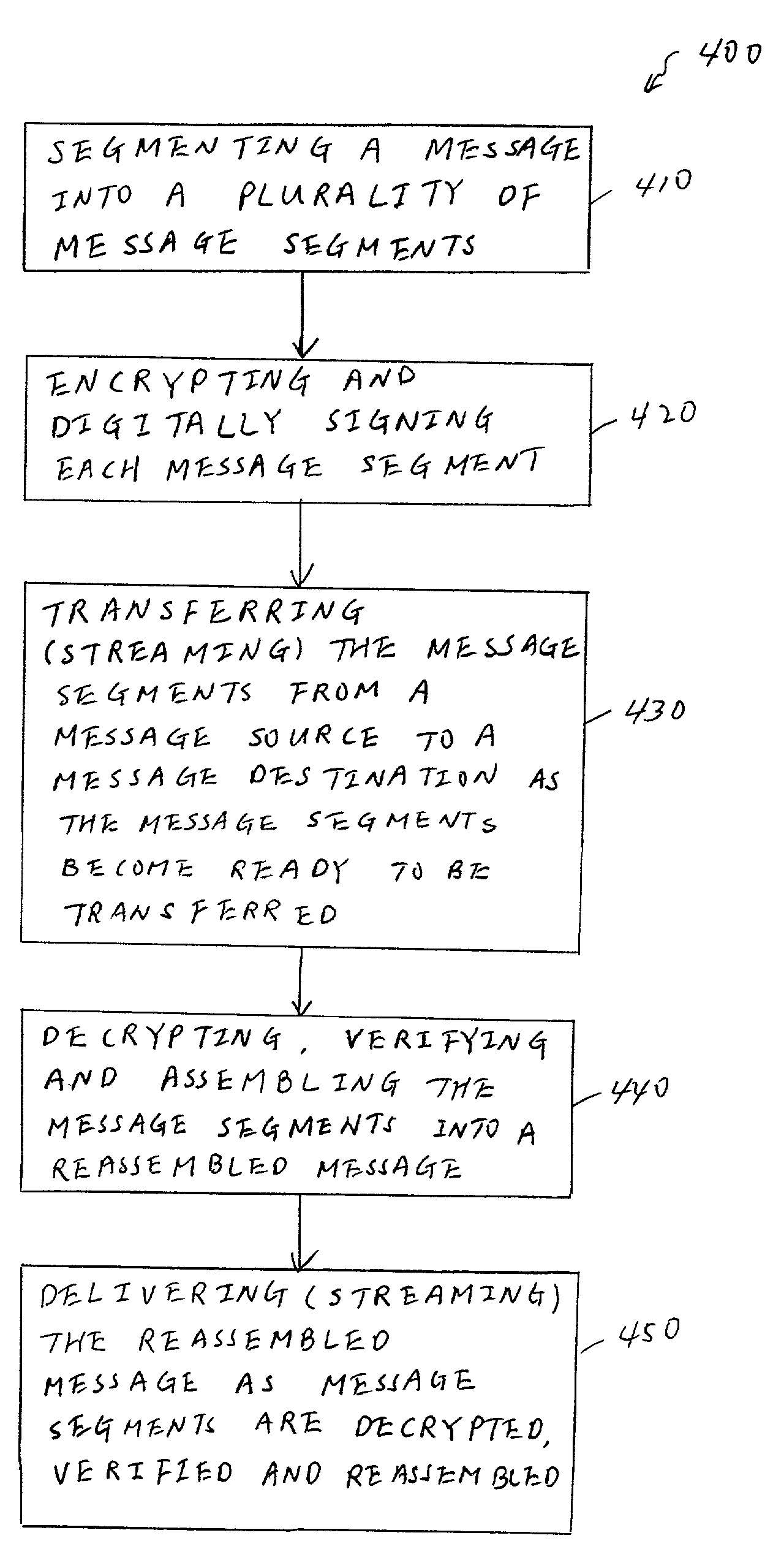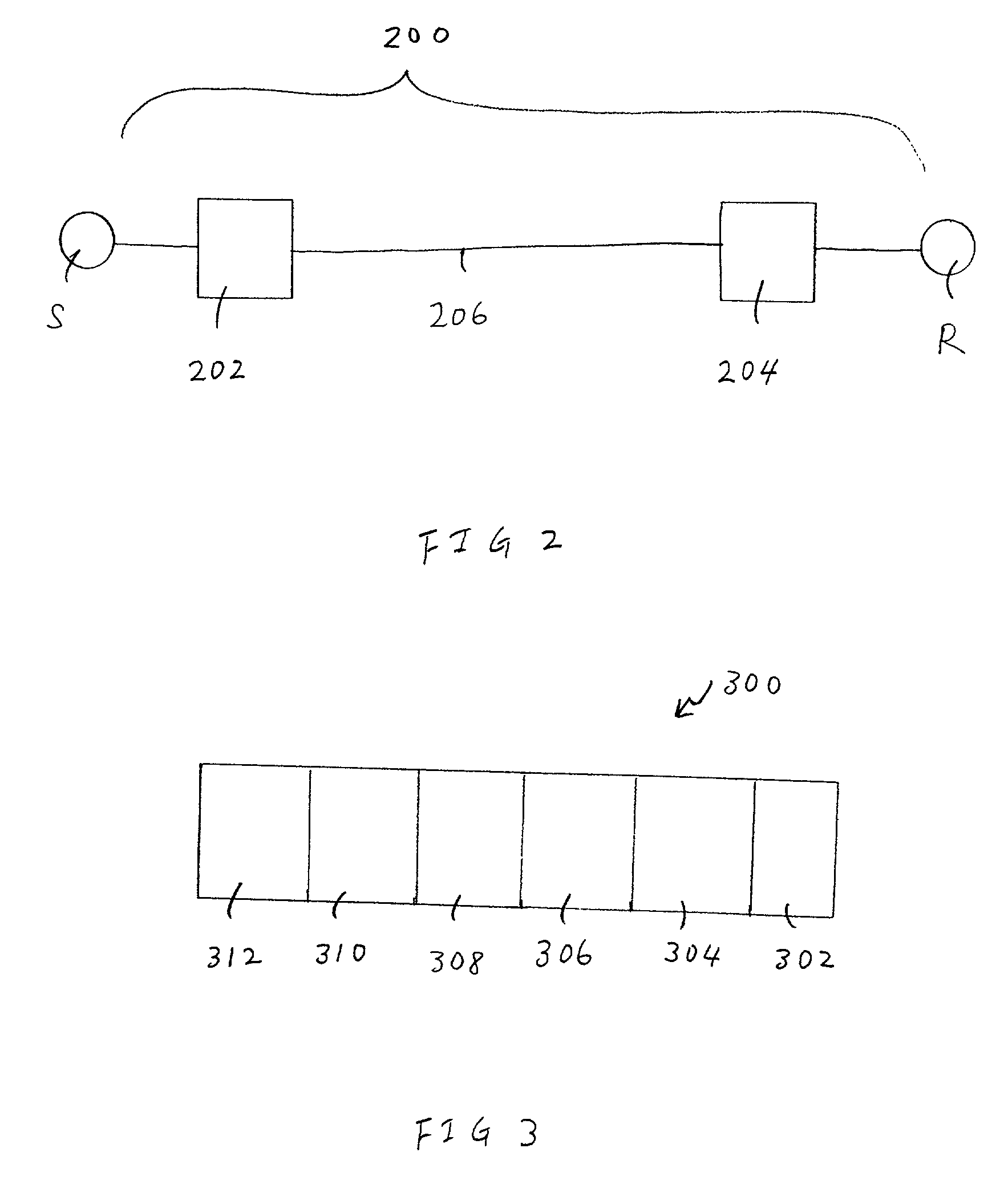Method for the secure and timely delivery of large messages over a distributed communication network
a distributed communication network and message technology, applied in the direction of digital transmission, multi-programming arrangements, instruments, etc., can solve the problems of message delivery failure, cumbersome and/or expensive, slow and/or cumbersome approaches, and at least two significant difficulties
- Summary
- Abstract
- Description
- Claims
- Application Information
AI Technical Summary
Benefits of technology
Problems solved by technology
Method used
Image
Examples
Embodiment Construction
[0020] FIG. 1 is a flow diagram illustrating a sequence of steps in a process 100 for transferring messages between a sending application program and a receiving application program across a distributed communication network (e.g., the Internet) according to one exemplary embodiment of the present invention. The distributed communication network, over which the message is transferred, includes a message source coupled to a message destination. The sending and receiving application programs can be any suitable application programs known to one skilled in the art including, but not limited to, business-to-business (B2B) application programs.
[0021] FIG. 2 is diagram of a portion of exemplary distributed communication network 200, over which process 100 operates to transfer a message. Distributed communication network 200 includes a message source 202 and a message destination 204, which are linked by at least one message path 206. In addition, message source 202 and message destination...
PUM
 Login to View More
Login to View More Abstract
Description
Claims
Application Information
 Login to View More
Login to View More - R&D
- Intellectual Property
- Life Sciences
- Materials
- Tech Scout
- Unparalleled Data Quality
- Higher Quality Content
- 60% Fewer Hallucinations
Browse by: Latest US Patents, China's latest patents, Technical Efficacy Thesaurus, Application Domain, Technology Topic, Popular Technical Reports.
© 2025 PatSnap. All rights reserved.Legal|Privacy policy|Modern Slavery Act Transparency Statement|Sitemap|About US| Contact US: help@patsnap.com



